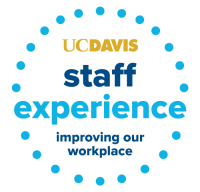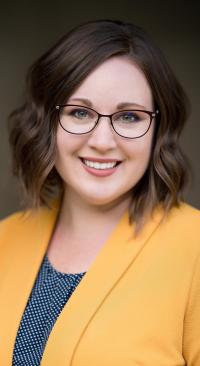Flexible Work Update at UC Davis
It’s been one year since UC Davis examined flexible work arrangements across the organization, and we’re heading in a positive direction for both employees and as an employer.
What began as a pandemic reaction quickly became an enduring feature of the modern working world, one that UC Davis is taking full advantage of.
In the most recent Staff Experience Survey, 'Workplace Flexibility' was tied for the second-best score, right behind purpose.
Our employees' unwavering commitment to serving our students and patients is a testament to the success of flexible work. As we continue to embrace its advantages, our impact becomes stronger and the future becomes brighter.
— Chancellor Gary May

Flex Work in 2022
Percentage of Staff with a Flexible Work Arrangement

Davis Campus
The number of flex work arrangements for Davis campus employees has remained stable over the past year, and that’s in large part due to its initial implementation during the first couple years of COVID-19.
The teams in Human Resources were tasked with swiftly transitioning a significant portion of UC Davis employees — the region's second largest workforce— into remote/hybrid structures. And time has proven those structures are both comprehensive and sustainable. Here's how our flex work liaisons say it was all possible:
- Listening to and communicating with a workforce who remained adaptable and committed in a time of uncertainty
- Standardizing Flexible Work Arrangements with the ongoing support of leadership
- Appointing Flex Work Liaisons for each department, unit and college
- Developing comprehensive planning guides and toolkits for both off-site and on-site work
Flexible work is here to stay and not just because its a tool to improve our employees’ work-life balance; it’s a critical part of our talent acquisition strategy and a fundamental way to increase productivity.
— Tammy Kenber, Chief Human Resources Officer
Sacramento Campus
As a pioneer at the forefront of the COVID-19 response, UC Davis Health has been catching up to expand flex work arrangements (FWA’s) where it makes sense. They’ve increased the amount of FWA’s by 84% (1334 in 2021, 2449 in 2022) and more than doubled the percentage of staff with an FWA (8% to 17%).
Many of these FWAs incorporate flex time instead of flex place, and give employees freedom to alter the start/end time of their workday or compress a standard workweek into fewer, longer days (e.g. four ten-hour shifts, instead of five eights). It's worth noting that these arrangements are designed to provide a flexible work environment for those who require it, and eligibility can vary depending on department needs and job requirements.
The remaining flexible work arrangements offer remote/hybrid options and have aided in decompressing the Sacramento campus by freeing up building space and parking spots for both employees and patients.
As a cutting-edge research hospital, we’re no stranger to constantly evolving circumstances. Flexibility has always been one of our greatest assets and we’re committed to making positive changes that benefit everyone.”
— Dr. David Lubarsky, CEO of UC Davis Health
Ultimately, the Workplace Reimagined effort is alive and evolving as UC Davis figures out what an ideal post-COVID workplace should look like. Human Resources meets regularly with Flexible Work Liaisons to share information and best practices, and is increasing learning opportunities to help schools/colleges/divisions better manage their flexible work. Meanwhile, across UC Davis, leaders are encouraged to reimagine their local areas and include as much flexibility as appropriate for their specific units.
From Those Behind the Scenes
On the Davis Campus, representatives from every school, college and division helped develop the way remote work would work for staff. The campus’s Flexible Work Liaisons still meet bi-weekly to help improve how UC Davis manages and engages its remote workforce.

"Expanding flex work and having clear expectations for employees, managers and supervisors has been paying off in all kinds of ways.
We’ve seen a reduction in commute time, costs, and associated stress, which means more time to manage other parts of life more efficiently. Employees have the ability to work when they’re most productive, when and where they have fewer distractions and live in far-away or low-cost areas without sacrificing time to commute.
There’s also this peace of mind for remote-workers who can focus completely on their contributions at work, as opposed to fixing their makeup, hair or clothes a certain way. It’s helping even the playing field for those who disproportionately have to perform that type of labor."

"It’s been great to see the university continue to embrace flexible work. Flex work can help us reduce turnover costs, as well as increase employee engagement, satisfaction, and productivity.
Flex work has also broadened the available pool of talent to include more people from diverse locations and backgrounds. Workplaces improve with increased diversity of thought and skills, and it's exciting to have a tool that makes working here more accessible."